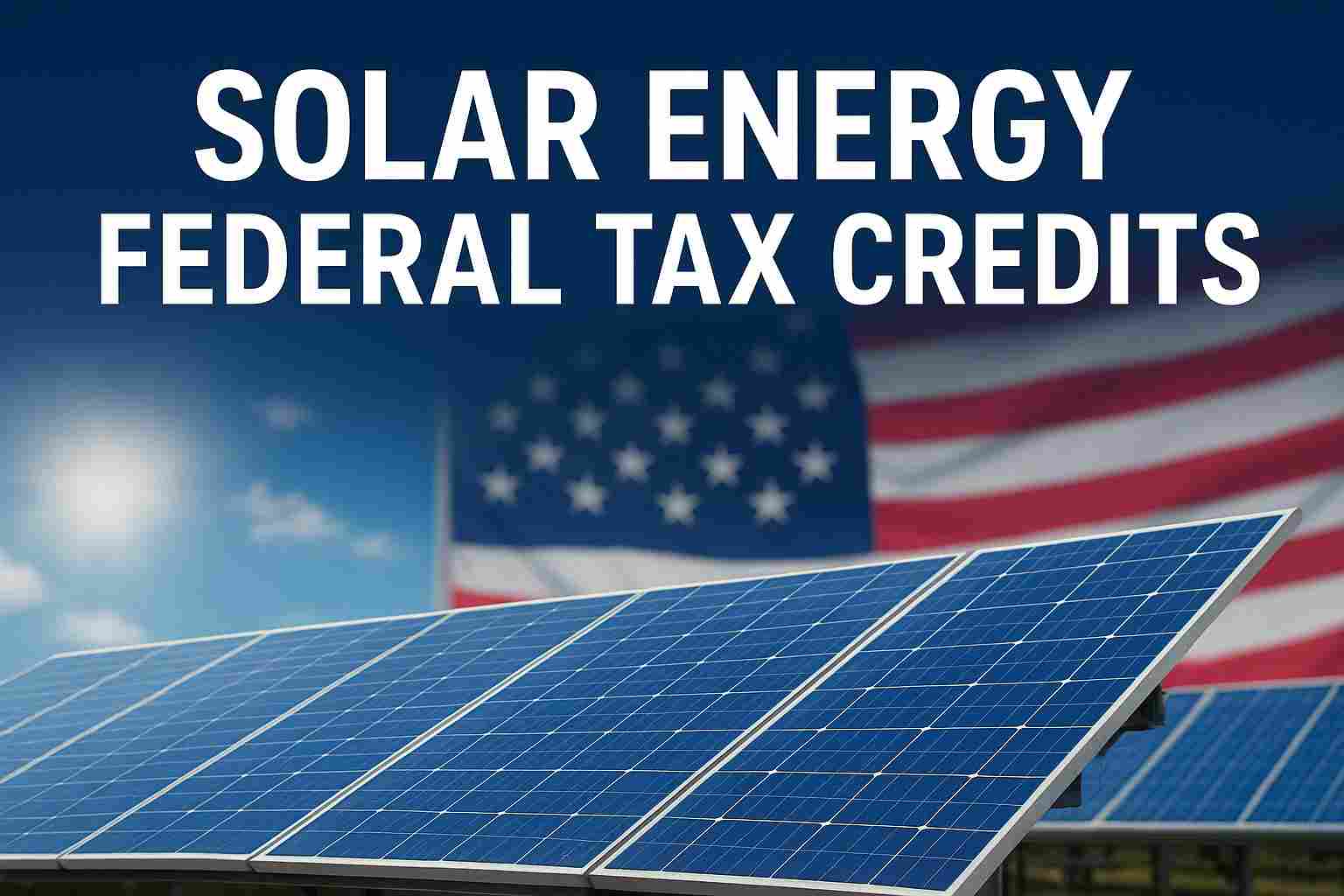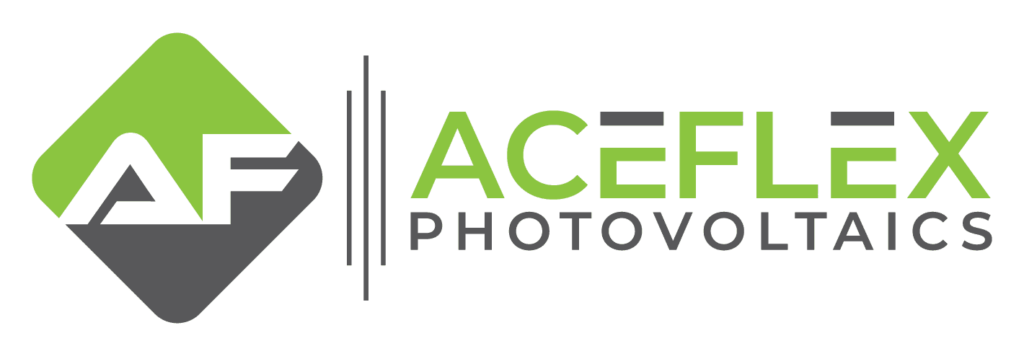📦 Fast Delivery – Order Now!
💸 Shop Safely – 100% Money-Back Guarantee
👨🔧 Lifetime Customer Support
📦 Fast Delivery – Order Now!
💸 Shop Safely – 100% Money-Back Guarantee
👨🔧 Lifetime Customer Support
As energy prices continue to rise and sustainability becomes a top priority for households and businesses, solar power has emerged as one of the most attractive solutions for reducing long-term costs and environmental impact. A key driver behind this momentum in the United States is the availability of solar energy federal tax credits, which serve as powerful financial incentives that make investing in solar energy significantly more affordable.
The federal solar tax credit—officially known as the Investment Tax Credit (ITC)—allows homeowners and businesses to deduct a percentage of their solar installation costs from their federal taxes. First introduced in 2006 and extended under the Inflation Reduction Act, the credit currently covers 30% of eligible expenses, from solar panels and inverters to battery storage and installation costs. This incentive has played a pivotal role in accelerating solar adoption across the nation, saving Americans thousands of dollars while advancing clean energy goals.

Thanks to the Inflation Reduction Act, homeowners and businesses installing solar systems can currently claim a 30% federal tax credit on qualifying expenses through 2032. After that, the credit will step down to 26% in 2033 and 22% in 2034 before it is scheduled to expire in 2035 unless Congress extends it. This makes the coming years an especially attractive window of opportunity for anyone considering solar, since projects started today still benefit from the full incentive.
The federal tax credit applies not only to solar panels but also to a wide range of related costs. This includes inverters, mounting equipment, balance-of-system components, and even labor and permitting fees. Since 2023, standalone battery storage systems also qualify, even if they are not directly connected to solar panels. This broader scope makes it easier than ever to design a clean energy system that meets your unique household or business needs while still taking advantage of the credit.
While most homeowners are familiar with the solar tax credit, the federal government also introduced the Clean Electricity Investment Credit (CEIC) in 2025. Unlike the ITC, which is focused specifically on solar and storage, the CEIC is technology-neutral and designed to support a wide range of clean energy sources. To help you understand the differences at a glance, here’s a comparison table:
| Feature | ITC / Residential Clean Energy Credit | Clean Electricity Investment Credit (CEIC) |
|---|---|---|
| Official Name | Residential Clean Energy Credit / Investment Tax Credit (ITC) | Clean Electricity Investment Credit (Section 13702, Inflation Reduction Act) |
| Start / Status | Introduced in 2006; currently 30% base rate for systems installed 2022–2032 (step-down after). | New technology-neutral incentive; applicable for projects placed in service starting 2025. |
| Covered Technologies | Mainly solar PV, solar batteries, and certain qualified residential clean energy systems. | Technology-neutral: solar, wind, storage, nuclear, geothermal, and any net-zero emission electricity source. |
| Who Can Claim? | Homeowners (must own the system) and businesses for commercial ITC. | Project developers, companies, and in some cases taxable owners of qualifying clean electricity facilities. |
| Base Rate | 30% (for residential through 2032; phase-down 2033/2034). | 6% base credit (without adders). |
| Max. Rate with Adders | Up to 30% (residential baseline); commercial projects can qualify for extra adders under specific rules. | Up to 30% or higher with adders (Prevailing Wage, Domestic Content, Energy Community, Low-Income incentives). |
| Prevailing Wage & Apprenticeship | Relevant mainly for larger commercial projects seeking bonus rates. | Central requirement: meeting wage and apprenticeship rules is key to receiving full credit levels. |
| Duration | 30% through 2032; drops to 26% in 2033, 22% in 2034, expires 2035 (unless extended). | Applies to facilities placed in service after 2024; continues indefinitely under IRA structure. |
| How to Claim | Individuals: IRS Form 5695. Businesses: IRS Form 3468. | Businesses and project owners: IRS guidance and forms (eligibility for transferability or direct pay options). |
| Key Considerations | Must own the system; keep invoices and installation proof; credit carries forward if not fully used. | Requires compliance with labor and domestic content rules for higher rates; more complex documentation. |
Not every project automatically qualifies for the federal solar tax credit, so it’s important to understand the rules before planning your installation. To be eligible, you must own your solar system outright—leasing or entering into a power purchase agreement (PPA) will not allow you to claim the credit. The property must be located in the United States and can be either your primary or secondary residence. For businesses, the credit applies to commercial properties as long as the project meets federal guidelines.
The process of claiming the credit is straightforward but requires accurate documentation. Homeowners use IRS Form 5695 (Residential Energy Credits) when filing their federal tax return. This form allows you to calculate the exact credit amount based on your installation costs. Businesses typically file IRS Form 3468 (Investment Credit) to claim their benefit. In either case, it’s essential to keep detailed invoices, receipts, and proof of installation dates, as these records may be requested by the IRS to verify your claim.

While the federal tax credit is the most well-known incentive, many states and local governments offer additional programs that can further reduce your upfront costs. These may include state tax credits, rebates from utility companies, property tax exemptions, or net metering policies that allow you to earn credit for the excess energy your system produces. The good news is that these incentives often work in combination with the federal credit, making the financial case for solar even stronger. Because policies vary widely by state, it’s best to consult your state’s official energy office or utility provider to explore the full range of opportunities available to you.
To illustrate the impact of solar energy federal tax credits, consider a homeowner installing a $20,000 solar energy system. At the current 30% rate, the federal tax credit alone would reduce their tax liability by $6,000, bringing the net cost of the system down to $14,000. When combined with potential state incentives and long-term energy savings, the payback period shortens considerably. For businesses, the numbers can scale even higher, especially for larger installations that qualify for both the ITC and additional CEIC adders in the future. These combined benefits make solar not just an environmentally responsible choice, but also a sound financial investment.

When it comes to the federal solar tax credit, a few misconceptions often arise. One common question is whether renters can claim the credit—the answer is no, as the credit applies only to system owners. Another misconception is that you must use the entire credit in the same year; in reality, if your tax liability is lower than the credit amount, the unused portion can roll forward into future tax years. Some homeowners also wonder if DIY solar projects qualify. While it is possible, only the cost of equipment and materials is eligible—not the value of your own labor. Understanding these details upfront can help you avoid surprises when it’s time to file.
The future of federal solar incentives is closely tied to national clean energy policy. As it stands, the 30% federal tax credit remains in place through 2032, with a gradual phase-down afterward. However, the introduction of the Clean Electricity Investment Credit (CEIC) in 2025 signals a broader shift toward technology-neutral incentives that support all forms of clean electricity. For homeowners, this means acting now ensures you benefit from the full 30% rate while it lasts. For businesses and larger projects, the CEIC offers additional flexibility and long-term certainty. Either way, the policy landscape continues to favor clean energy, making the present an ideal time to transition to solar.

Solar energy federal tax credits remain one of the most effective tools for lowering the cost of clean energy adoption in the United States. By covering 30% of eligible installation expenses, it significantly reduces upfront investment while accelerating the payback period for both homeowners and businesses. With the current rate guaranteed through 2032 and the future introduction of the Clean Electricity Investment Credit, there has never been a better time to take advantage of these incentives.
If you are considering solar, the best move is to act now while the full credit is still available. At AceFlex, we provide high-quality solar panels, storage solutions, and complete solar kits designed to maximize your energy independence and financial return. Explore our catalog today and take the first step toward lowering your energy bills while contributing to a sustainable future.

Solar energy federal tax credits are incentives provided by the U.S. government to reduce the cost of installing solar panels. Homeowners and businesses can deduct a percentage of installation costs from their federal taxes.
Currently, you can claim up to 30% of eligible solar installation costs through 2032 under the Investment Tax Credit (ITC). Savings depend on the total system cost.
Both homeowners and businesses qualify if they install a solar system on a property they own in the United States. The system must be new and placed in service during the eligible period.
The ITC is the existing credit available through 2032, while the CEIC is set to replace it starting in 2025. The CEIC expands eligibility to include more clean energy technologies and offers additional “bonus credits” for projects that meet labor, domestic content, or location requirements.
Yes. Many states, utilities, and municipalities offer additional rebates, grants, or tax incentives. These can be combined with federal credits to maximize savings.
No, the credit reduces the amount of federal income tax you owe. If the credit is larger than your tax liability, you may carry the unused portion forward to future tax years.
The future of the tax credit depends on federal policy decisions. As of now, the 30% credit remains in place under current legislation, and any changes would require new laws to be passed.
Yes. The federal tax credit allows you to deduct a portion of your solar installation costs from your federal income taxes.
No. There is currently no income limit to qualify for the solar federal tax credit.
The IRS requires you to submit Form 5695 when filing your taxes. Supporting documentation, such as invoices and receipts, should be kept in case of an audit.
Eligible costs typically include solar panels, inverters, mounting equipment, wiring, labor, and permitting fees related to the solar installation.
Yes. Studies have shown that homes with solar panels generally sell at a premium compared to similar homes without solar.
Not usually. However, certain roof materials that directly contribute to energy generation (such as solar shingles) may qualify. Standard roof replacements do not.
The Inflation Reduction Act (sometimes referred to in political language as a “big bill”) expanded and extended solar tax credits. Any new legislation in the future could further impact the credit, but currently, the credit is secured through at least 2032.
AceFlex is one of the leading online retailers of renewable energy products and offers a wide range of solar products. We work with well-known manufacturers and wholesalers and can offer you cost-effective products in the field of photovoltaics so that you too can contribute to the energy transition.
Looking for an experienced team for planning your photovoltaic system without the hassle of doing it yourself? We are your trusted partner, offering comprehensive nationwide solutions. We provide expert consultation and supply of both photovoltaic systems and storage units tailored to your specific needs.
© 2025 Aceflex All Rights Reserved. Design by Media Pantheon, Inc.